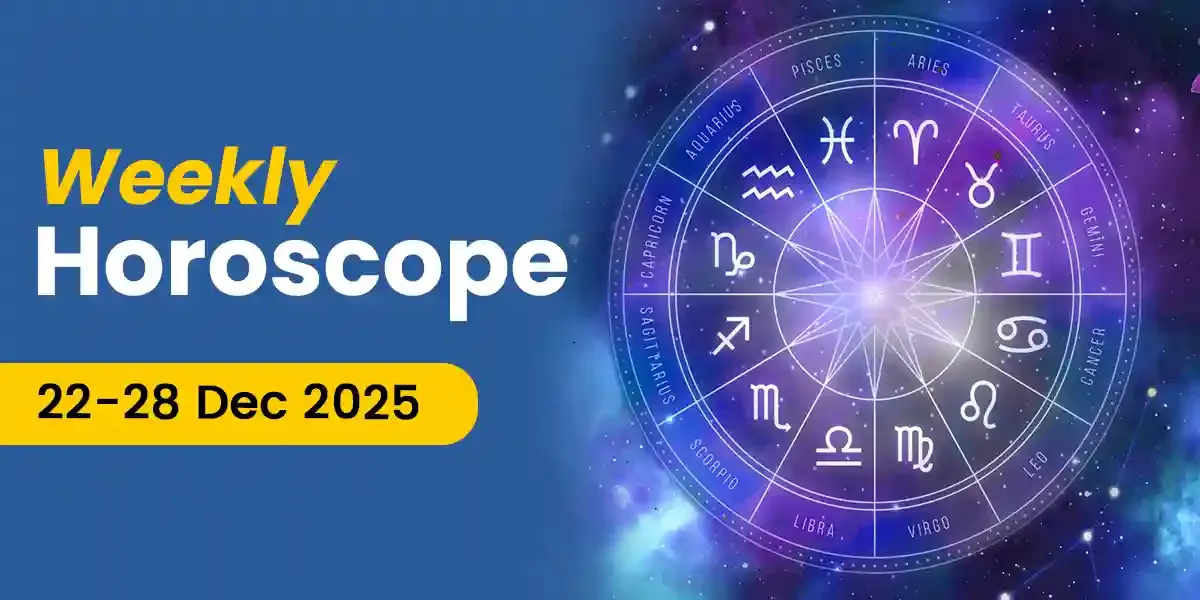
Remember to gaze up towards the sky because a beautiful meteor shower in India will greet you! Many people will be watching the Eta Aquarids this year, especially since April's Lyrids were drowned in the moonlight. Eager to learn more? Read the article to know everything about this celestial treat that has sparked the interest of many.
The Eta Aquarid meteor shower 2022 will peak on the night of May 4th and 5th 2022. The Eta Aquarids are best seen from the southern tropics, but a dark sky position in the northern hemisphere can still see up to 30 meteors per hour. Eta Aquarid meteors are fast-moving and leave extended tails. The Moon will only be 15% full at the shower's peak in 2022, making viewing easier.
Looking for an astrologer's guidance? Turn to Astroyogi.
This meteor shower in India will be a sight to behold, so let’s know more.
What Exactly Is A Meteor?
Meteors are light streaks in the sky generated by dust and sand-sized objects burning up as they collide with Earth's upper atmosphere. At night, these microscopic particles produce flashy streaks of light that can be seen from the ground. The brighter the meteor, the more significant the chunk of space dust. Because space is packed with dust, you might view up to 10 meteors per hour from a dark place on a regular night.
How Does A Meteor Shower Happen?
Meteor showers occur when the Earth passes through debris thrown up by a comet or an asteroid. They reoccur every year around the same time as Earth rotates in its orbit and passes through the debris once more.
Meteor showers are named after the constellation where the shower's radiant is located. The radiant is where the meteors appear to come from; if you draw a line back along with the meteors, they will all intersect at the same location. This is due to the Earth's speed as it passes through comet debris, so when you see a meteor shower, you're actually seeing direct evidence of our planet orbiting the Sun!
Get To Know The Parent Comet Of The Eta Aquarid
- It is named after the renowned Halley's Comet, the parent comet of the Eta Aquarid meteor shower.
- This comet is orbiting the sun in a backward direction. That is to say; it orbits the sun in the opposite direction as Earth and the other planets.
- As a result, we come close to crossing its path twice.
- The Eta Aquarid meteor shower occurs every year in early May due to this.
- The Orionid meteor shower occurs in late October each year when the comet is passing through the outbound region of its orbit.
In 2061, Halley's Comet will return. While you wait for Halley's Comet to reappear, keep an eye out for the Eta Aquarid meteor shower 2022 in early May.
Read More👉 These 10 Female Astrologers Can Change Your Luck! Find Out Who They Are!
About This Meteor Shower's Radiant
- If you trace the Eta Aquarid meteors' trail backward, they all appear to radiate from a single location in front of the constellation "Aquarius- the Water Bearer".
- The meteor shower's radiant is a spot on the sky's dome that almost aligns with the dim star Eta Aquarii.
- Eta Aquarii is one of four stars that make up the Y-shaped water jar asterism in Aquarius' northern hemisphere.
- The higher the radiant of a meteor shower appears in the sky, the more meteors you'll witness.
- For the Eta Aquarids, the radiant soars brightest in the night sky just before dawn. One of the reasons you'll see the most meteors in the early morning hours is because of this.
The Best Way To Watch A Meteor Shower
All you need to see a meteor shower is your eyes, patience, and a relatively cloud-free night. Go outside, find a comfortable spot, and gaze at the sky. The optimum time to witness a meteor shower is between midnight and pre-dawn. Because you are on the top side of the Earth, you will feel the comet debris come at you like the rain hitting a car windshield while watching the meteor shower.
You don't have to look in the direction of the radiant; in fact, meteors that are farther away will appear to be longer. Although it is commonly stated that facing 45 degrees away from the radiant is optimal, the most crucial component is traveling to a dark spot away from city lights. Allow your eyes to adjust for several minutes and look at the darkest patch of sky possible.
Get out one hour before midnight if you want to view this magnificent meteor shower and create cherishable memories in life.
Do you wish to know more about your life? Connect with Astroyogi astrologers right away.
✍️By - Team Astroyogi
Our in-house team of writers comprises of vibrant, like-minded, and curious souls who are passionate about helping people find joy and motivation through the magic of words. Our writers are keen on using their skills to make the study of divination sciences a guiding tool in people's lives. They hold expertise in writing on a myriad of topics related to Indian Astrology, Spirituality, Planetary Movements, Vastu Shastra, Numerology, and Tarot among several others. The Astroyogi team aims to write articles that can help the readers lead a life of peace and tranquility whilst enjoying the many ups and downs of life!


































